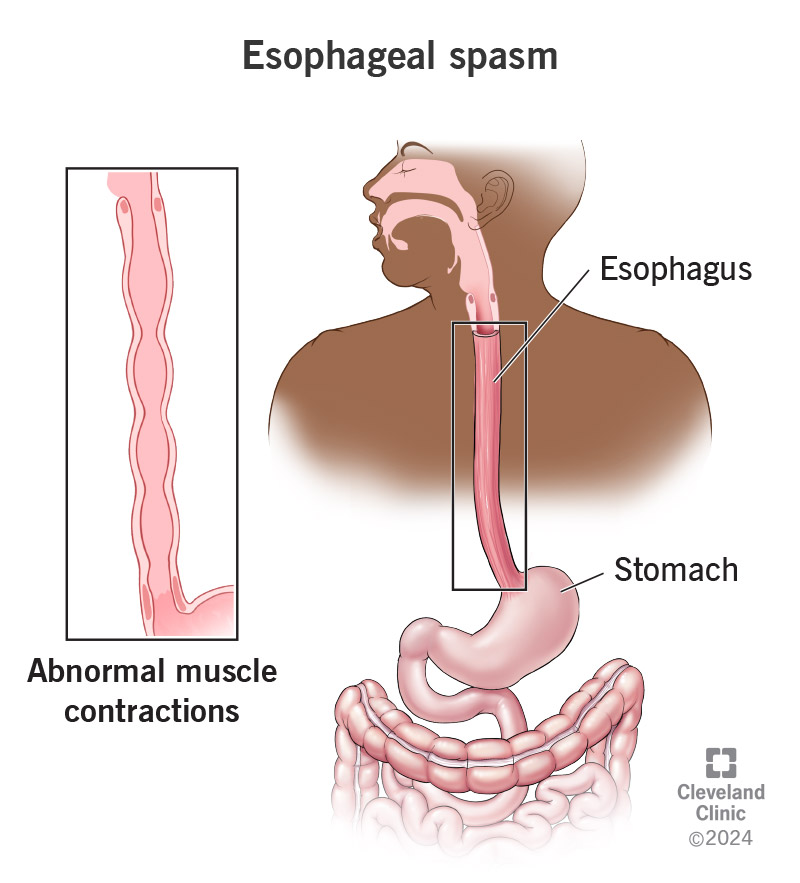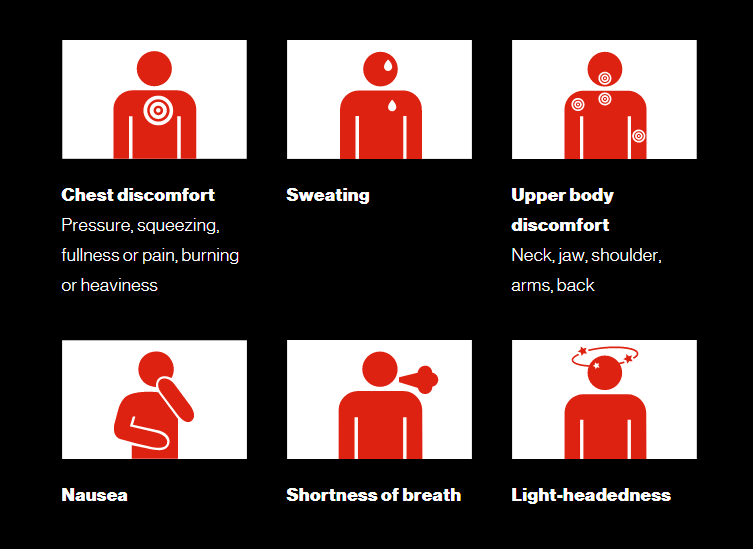Feeling chest pain can be scary and stressful. You want relief quickly.
So, how can you calm down your chest pain? Chest pain can have many causes, including stress, anxiety, or physical strain. Sometimes, simple methods can help ease the discomfort. Understanding why you're experiencing chest pain is key to managing it.
In this blog post, we'll explore practical ways to calm your chest pain. These techniques can offer comfort and help you feel better. Whether it's through relaxation exercises, lifestyle changes, or knowing when to seek medical help, we've got you covered. Let's dive in and find the best ways to soothe your chest pain.
Causes Of Chest Pain
Experiencing chest pain can be alarming. Understanding the causes can help. Chest pain can arise from various reasons. Some are simple, while others are serious. Knowing the cause helps in managing the pain better.
Common Triggers
Several factors can trigger chest pain. Below are some common triggers:
- Stress and Anxiety: These are frequent triggers of chest discomfort.
- Poor Posture: Bad posture can lead to muscle strain in the chest.
- Overexertion: Intense physical activities can cause chest pain.
- Indigestion: Overeating or spicy foods can cause heartburn and pain.
- Smoking: It irritates the lungs and can cause chest pain.
Medical Conditions
Some medical conditions can also cause chest pain. Here is a list of common conditions:
- Heart Attack: A severe condition needing immediate attention.
- Angina: Chest pain due to reduced blood flow to the heart.
- Pneumonia: Infection in the lungs causing chest pain.
- Costochondritis: Inflammation of the cartilage in the rib cage.
- Gastroesophageal Reflux Disease (GERD): Acid reflux causing a burning sensation in the chest.
If you experience severe chest pain, seek medical help immediately.
Immediate Steps To Take
Chest pain can be alarming. But there are steps you can take to calm down. Knowing what to do immediately can make a big difference. Below, we will discuss the important steps to take right away.
Assessing The Pain
First, try to assess the pain. Is it sharp or dull? Does it spread to other parts of your body? Note if it worsens with certain movements or if it stays constant.
- Sharp pain: May indicate a muscle issue.
- Dull pain: Could be related to stress or anxiety.
- Radiating pain: Especially to the arms, back, or jaw, might signal a heart problem.
Write down these observations. They can help healthcare providers understand your condition better.
When To Seek Help
Not all chest pains are emergencies. But some require immediate attention. Here are signs you should look out for:
- Severe pain that doesn't go away after a few minutes.
- Shortness of breath or difficulty breathing.
- Fainting or dizziness.
- Pain that spreads to arms, back, or jaw.
- Persistent nausea or vomiting.
If you experience any of these symptoms, call emergency services right away. Do not wait.
While waiting for help or if the pain seems mild, you can take these steps:
| Step | Description |
|---|---|
| Rest | Stop all activities and sit or lie down in a comfortable position. |
| Deep Breaths | Practice deep breathing to reduce anxiety and tension. |
| Medication | If prescribed, take your medication for chest pain. |
| Stay Calm | Keep yourself calm to avoid increasing your heart rate. |
These steps can help to alleviate the pain or at least prevent it from getting worse.
Breathing Techniques
Experiencing chest pain can be scary. Breathing techniques can help manage and reduce this pain. These methods can relax your body and calm your mind. Let's explore a few effective techniques.
Deep Breathing
Deep breathing is simple yet powerful. Start by sitting in a comfortable position. Close your eyes and take a slow, deep breath in through your nose. Feel your lungs expand. Hold the breath for a few seconds.
Then, slowly exhale through your mouth. Repeat this process several times. This technique can help lower your heart rate and ease chest pain. Practice it daily for better results.
Diaphragmatic Breathing
Diaphragmatic breathing involves using your diaphragm more actively. Lie on your back with your knees bent. Place one hand on your chest and the other on your abdomen. Breathe in slowly through your nose.
Your abdomen should rise more than your chest. This shows you are using your diaphragm. Exhale slowly through your mouth. Keep your hand on your chest still. Repeat for a few minutes.
This technique can improve your lung efficiency. It can also reduce stress and chest pain. Practice regularly to see significant benefits.

Credit: my.clevelandclinic.org
Relaxation Methods
Experiencing chest pain can be alarming. It is crucial to find ways to calm down and ease the discomfort. Various relaxation methods can help. These techniques can provide relief and promote a sense of well-being.
Progressive Muscle Relaxation
Progressive Muscle Relaxation is a simple technique. It involves tensing and then relaxing different muscle groups. This process helps reduce tension and stress.
- Sit or lie down in a comfortable position.
- Focus on your breathing. Take slow, deep breaths.
- Start with your toes. Tighten the muscles for 5 seconds.
- Release the tension. Feel the muscles relax completely.
- Move up to your calves, thighs, and so on. Continue to your face.
Repeat this process for each muscle group. This practice can help calm your chest pain.
Meditation Practices
Meditation Practices are effective for managing chest pain. They help focus the mind and promote relaxation.
- Find a quiet space. Sit comfortably with your back straight.
- Close your eyes. Take deep, slow breaths through your nose.
- Focus on your breath. Notice the sensation of air entering and leaving.
- If your mind wanders, gently bring your focus back to your breath.
- Continue this practice for 5-10 minutes.
Regular meditation can reduce stress and help manage chest pain.
Combining these relaxation methods can provide relief. Practicing them daily can improve your overall well-being.
Lifestyle Changes
Experiencing chest pain can be scary. Sometimes, making simple lifestyle changes can help reduce or even eliminate chest pain. These changes can improve your overall heart health. Here are some key areas to focus on:
Healthy Diet
A balanced diet plays a crucial role in maintaining a healthy heart. Here are some tips for a heart-healthy diet:
- Eat more fruits and vegetables: Aim for at least five servings daily.
- Choose whole grains: Opt for whole-wheat bread, brown rice, and oats.
- Limit saturated and trans fats: Avoid fried foods and opt for lean meats.
- Reduce salt intake: Too much sodium can increase blood pressure.
- Stay hydrated: Drink plenty of water throughout the day.
Here is a sample of a balanced daily meal plan:
| Meal | Foods |
|---|---|
| Breakfast | Oatmeal with berries and a glass of skim milk |
| Lunch | Grilled chicken salad with mixed greens and olive oil dressing |
| Dinner | Baked salmon, quinoa, and steamed broccoli |
Regular Exercise
Physical activity strengthens the heart and improves blood circulation. Here are some exercises to incorporate into your routine:
- Walking: Aim for at least 30 minutes daily.
- Swimming: A low-impact exercise that's easy on the joints.
- Cycling: Great for cardiovascular health and leg strength.
- Yoga: Helps reduce stress and improves flexibility.
- Strength training: Use weights or resistance bands twice a week.
Remember, consistency is key. Start slowly and gradually increase the intensity and duration of your workouts.
Natural Remedies
Natural remedies can be effective in calming chest pain. These methods are often simple, accessible, and gentle on the body. They offer an alternative to medication and can be used in the comfort of your home.
Herbal Teas
Herbal teas have soothing properties that can help reduce chest pain. Chamomile tea is a popular choice. It has anti-inflammatory effects and can relax the muscles around the chest. Ginger tea is another excellent option. It helps improve digestion and reduce bloating, which can relieve chest discomfort.
Peppermint tea is known for its cooling sensation. It can help ease muscle tension and reduce pain. Drinking these teas warm is best. It enhances their calming effects and helps you feel better faster.
Essential Oils
Essential oils are natural extracts that can relieve chest pain. Lavender oil is widely used for its relaxing properties. It can reduce stress and help you breathe more easily. Eucalyptus oil is another good choice. It opens up the airways and makes breathing smoother.
To use essential oils, mix a few drops with a carrier oil like coconut oil. Massage the mixture onto your chest gently. You can also use a diffuser to inhale the calming scents. This method helps relax your body and mind, easing chest pain effectively.
Over-the-counter Solutions
Chest pain can be frightening and uncomfortable. Several over-the-counter solutions can help. These options are easily accessible and can provide relief. Below, we discuss some common over-the-counter solutions for chest pain.
Pain Relievers
Pain relievers can be effective for chest pain. Ibuprofen and acetaminophen are common choices. They reduce inflammation and ease discomfort. Always follow the dosage instructions on the package. It's important to consult a doctor if pain persists.
Antacids
Antacids can help if your chest pain is due to acid reflux. They neutralize stomach acid and provide quick relief. Tums, Rolaids, and Mylanta are popular options. Antacids are available in tablets and liquids. Chewable tablets are convenient for on-the-go relief. Remember to read the label for proper usage.

Credit: www.heartandstroke.ca
Professional Treatments
Experiencing chest pain can be terrifying. Seeking professional treatments can offer peace of mind and relief. Understanding your options will help you make informed decisions. Below are two main categories of professional treatments: Therapy Options and Medical Interventions.
Therapy Options
Therapy can be highly effective in managing chest pain. Different types of therapy address different causes. Here are some common options:
- Cognitive Behavioral Therapy (CBT): Helps manage anxiety-related chest pain.
- Physical Therapy: Useful for musculoskeletal issues.
- Massage Therapy: Relieves tension and improves circulation.
- Acupuncture: Offers relief by stimulating specific points on the body.
These therapies aim to treat the underlying causes of your chest pain. Consult a healthcare professional to find the best fit for your condition.
Medical Interventions
Sometimes, therapy alone is not enough. Medical interventions may be necessary to treat chest pain effectively. Here are some common medical treatments:
- Medications: Pain relievers, anti-inflammatories, or anxiety medications.
- Surgical Procedures: For serious conditions like heart problems.
- Injections: Steroid or anesthetic injections for immediate relief.
- Cardiac Rehabilitation: A program to improve heart health.
These interventions are designed to address more severe causes of chest pain. Always seek advice from a medical professional before starting any treatment.
Frequently Asked Questions
What Causes Chest Pain?
Chest pain can be caused by stress, anxiety, or muscle strain. It can also indicate heart conditions. Consult a doctor for an accurate diagnosis.
How Can I Calm My Chest Pain Quickly?
To calm chest pain, try deep breathing exercises, meditation, or a warm compress. Avoid strenuous activities and seek medical advice if the pain persists.
Are There Natural Remedies For Chest Pain?
Yes, natural remedies include drinking chamomile tea, using lavender oil, or practicing yoga. These methods can help relax your body and reduce pain.
When Should I Seek Medical Help For Chest Pain?
Seek medical help if chest pain is severe, persistent, or accompanied by symptoms like shortness of breath, dizziness, or nausea. Prompt medical attention is crucial.
Conclusion
Managing chest pain can be challenging, but simple steps help. Practice deep breathing and relaxation techniques. Stay hydrated and avoid heavy meals. Regular exercise strengthens your heart. Don't ignore persistent pain; seek medical advice. Remember, taking small steps can make a big difference.
Make lifestyle changes for better heart health. Stay calm and listen to your body. Your well-being is important. Always prioritize your health.






